The four classical elements are originally related to the ancient Greek theories, to explain the complexity of the natural world and consequent expansion and relations with Man.
We tried to develop a new approach where the properties of Nature fit perfectly on Man’s essential features. The main goal is to find the cycles of the matter and spirit and how they interconnect between themselves in order to reveal the balance of life.

In this cyclic motion we randomly start with Fire.
Fire
Fire is usually described as the power of destruction and death. In Alchemy, however, The Fire is the principle of Life and motion. The element contains the sparkle which is the will and determination of all matter (Coagula). Its active properties are related to the Sun and the masculine principle.
In Man’s attributes, Fire represents the youth and the Choleric humour. Both are straightly linked with the most progressing and agile periods in human’s life.
In cycles of Nature, Fire is the Summer when the fruits get ready to be consumed and when they get their sweetest flavour.
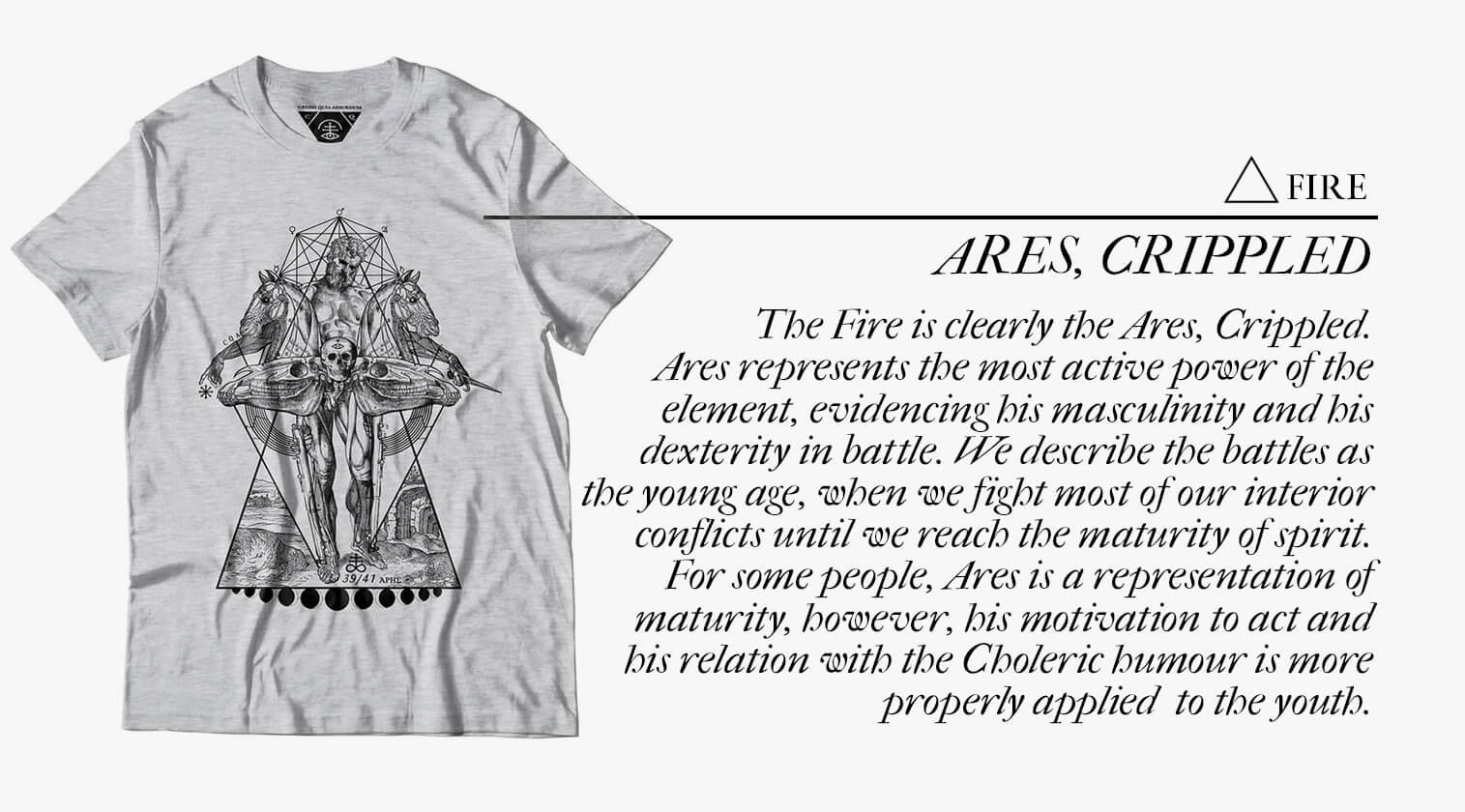
Earth
Earth is the feminine principle and therefore a passive element. In a psychological perspective, represents the meditation and moderation, a consequent evolution from the hyperactivity of Fire. For that reason, Earth is the maturity, where the stability and fortitude allow us to explore the intellectual world. This evolution is a way to understand ourselves deeply.
The Melancholic humour of man is the perfect representation on that maturation of the human growing, a balance of the enthusiastic attributes of the past. The intellectual aspect of this element can slightly lead us to some feelings as grief or anguish, since we are confronted with our own limitations and inability to change the world. In Nature we easily describe the season of Autumn, the reflection of the nostalgic age of the human spirit.
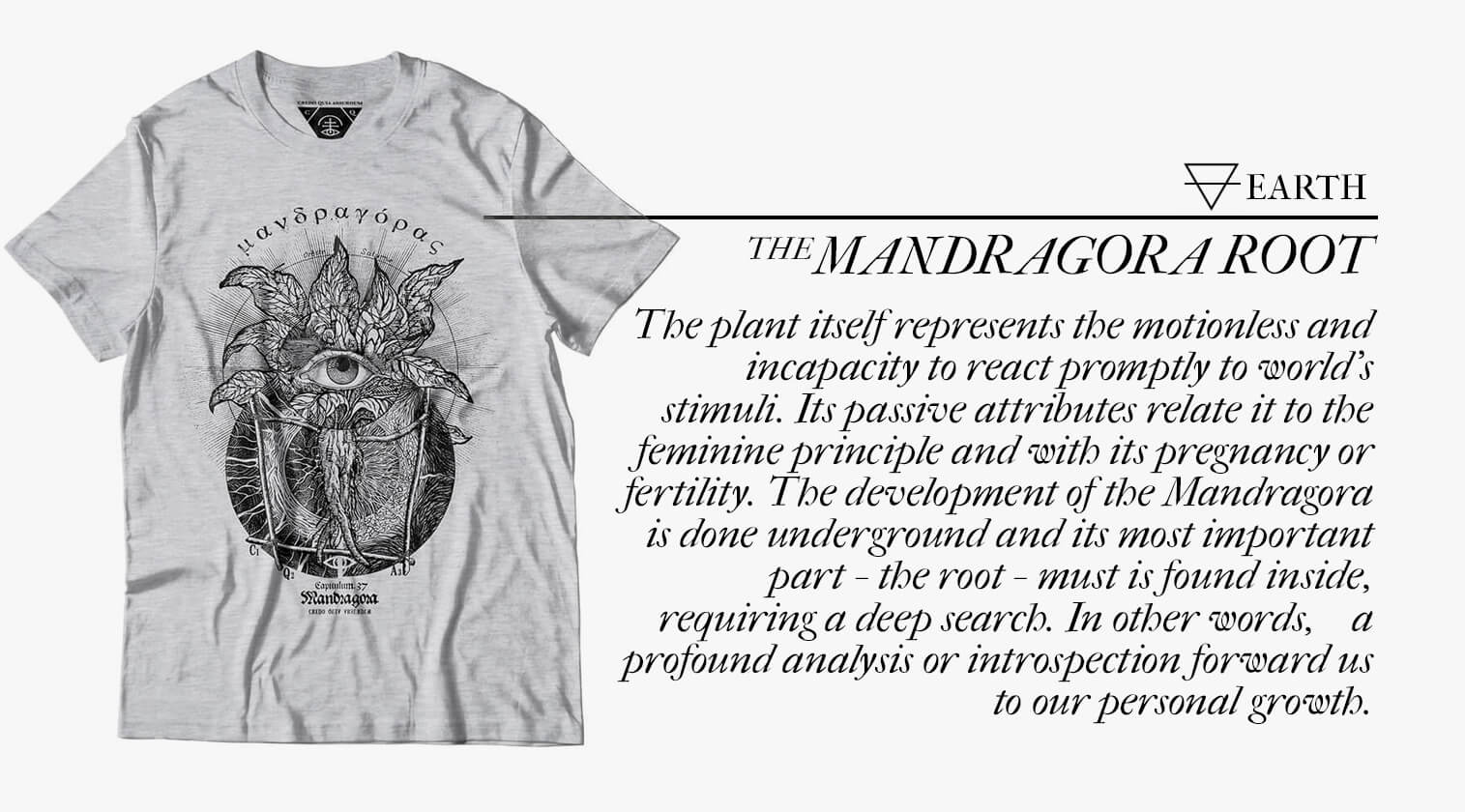
Water
Water is the second passive element, along with Earth. This element manifests the experienced self, side by side with the old age of Man. The water in most cultures is an element of healing and life. In alchemical water is different. Water in hermetic tradition is associated with the process of dissolution, transforming and dissolving the matter into its most basic form (Solve). The process itself consists in decomposing the body, cleaning all the impurities and prepare it for the next, spiritual stage.Jacob Boheme describes Water as the death. We find a parallel reference in tarot, with the card XIII – the Death-which is the metaphor for a drastic change or a new beginning. So is the Water, acting as an agent of putrefaction to transform the corrupted matter into a new pure spiritual being. The keyword for this operation is Adaptation.
In Nature, Water is also the absence of life, mostly in plants. The flowers died, to be manured, fertilising the soil to the young seeds. In Man’s features refers to Phlegmatic temperament, characterised by the apathetic condition and lack of excitement.

Air
Air is the beginning of a new journey. The purification occurred during the previous operation brings a completely new stage. As in the Springtime, the Air speaks of hope and promises of joy which is the motivation adjacent to the morning light. The element itself represents the first spiritual stage inside this seasonal cycle. For that reason there is a straightly connection with the infancy in Man’s life.
The Air also portrays the sanguine humour which is a cheerfully and optimistic disposition, compared, sometimes to the transformation of the flowers, now at their most colourful moment. This cycle brings back the masculine principle and its active properties. In contrast, the Air is at the same time the inexperienced self, credulous and naive.

*This period of obscurity is sometimes (intentionally) embraced trough a process called “Darkroom Retreat”, used as a type of meditation in multiple spiritual traditions, in order to find our true self and the light within the darkness. In Taoist philosophy “when you go into the dark and this becomes total, the darkness soon turns into the light.” When we return to nature’s original darkness you return to the womb of the Universe.
Elements qualities:
Dry
quality common to Fire and Earth
Dryness is a quality of a solid matter, allows the material to redefine its original shape and its properties.
Dry things are usually structured, however, we can consider this property as semi-volatile.
At our option, the alchemical component behind the Dryness is Niter or Saltpeter. In the natural world we usually get the element in organic manure or ashes and coal from burning wood. In both examples, the active principle of Fire has the power to manipulate the rigidity and shape of them while the fixed and passive properties of the earth conditions the stability of the matter.
Sometimes Niter is related to the volcanos which is the perfect analogy to the Fire/Earth amalgamation.
The hermetic philosophy is not specific about the Niter, but according to several alchemists, the characteristics of the element can direct us to the concept of Mind.
The Mind builds the bridge from what is intellectual to what is corporeal. Consequently, the body affects the perception with the aid of the five physical senses. The Intellect commands the body according to our experiences and feelings, avoiding the danger or physical pain. There is an unbreakable cycle between them, yet, their connection seems to be arbitrary.
In the ancient Egypt the mummies were usually covered with Niter/ Natron* in order to dry and conserve the body for much longer. The method used was very close to the traditional way to conserve food with salt. Niter itself is also considered a variant of salt.

*Niter and Natron were considered many times as the same substance in the Antiquity and Middle Ages. Some kind of confusion were installed for centuries, only the modern chemistry explained accurately the difference between them. Anyway, most of our base of study is set before the XX century and we decide to keep both of them together as one.
Cold
quality common to Earth and Water
The Coldness represents the absolute passivity, so the elements should appear fixed and stable.This property has a relatively low temperature, in opposition to the hottest properties. Cold makes things gross, heavy, falling and centripetal, focused on a single object and seeking the center – just like us, stuck in a moment of introspection and with a feeling of lethargy, as a denial for new experiences.
Coldness is between Earth and Water and symbolises the maturity to old age (Autumn to Winter). The lack of confidence and spiritual blocking, throw us to a decisive step of changing and meditation. The cycles are impositions to all things, nothing remains the same and no darkness is eternal.
In alchemy we doubtless associate this state of the matter as alchemical salt.
Salt is the symbol of the physical body and it is the constrictive force, displaying the process of condensation and crystallization in chemistry.
“This alchemical substance represents matter in a complete form without division. Regarding its symbol, the horizontal line within its infinite circle within represents time, limitation and life within the context of the eternal spirit.”
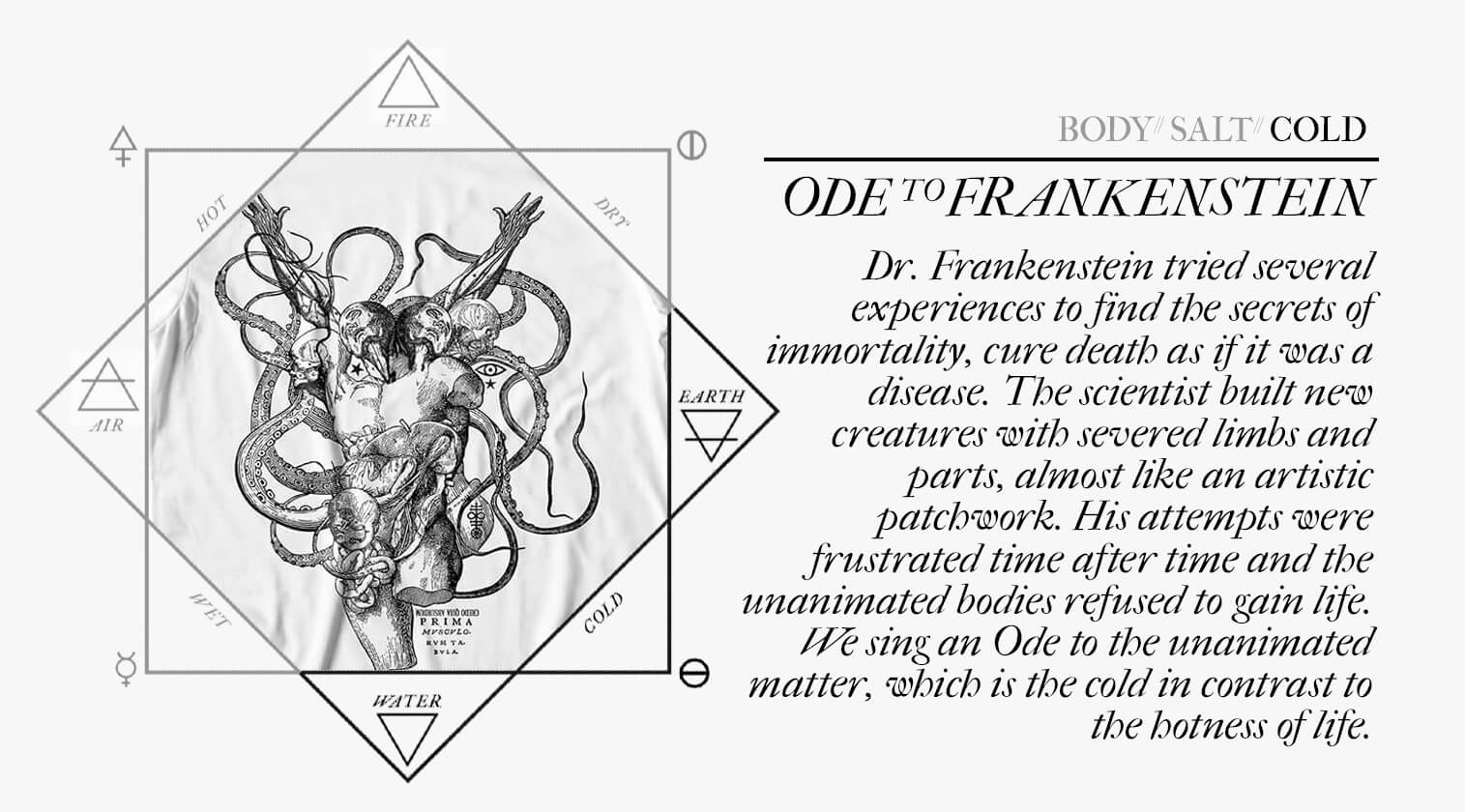
Wet
quality common to Water and Air
The Wetness is a quality of fluidity or flexibility, allowing an element to adapt to external conditions. It can fill spaces in their surroundings, but we cannot define wetness as fully volatile because it is notorious its dependence on active properties to change its configuration.
As an attribute common to Air and Water, this elemental property could be at the same time moderate or expansive, so it is sensitive to external conditions. The Air has the ability to transform the substance because it is an active element. The same way, the Water, has significant influence concerning the moderation and stability.
Wetness is associated with the alchemical Mercury, an omnipresent life force whose shape is adaptable. For that reason, it is said that transcends the typical concept of Life/Death, in alchemical words is the component which allows the purification of the corrupt matter. That means that Mercury makes possible the connecting between the physical (salt) and spiritual (sulphur) worlds.
In the Aristotelian graphic (described here), the Mercury / Wetness is the contrary of the Niter / Dryness. The Mercury was related to the concept of spirit, an inspiration of the intellect and ignition of the will. That enthusiastic phase represents the positive aspects just like an epiphany or an awakening. In contrast, Niter is the Mind, much more instinctive that intellectual and it mirrors the soul’s asleep, following the cycle’s step: active > passive.

Hot
quality common to Air and Fire
The Hotness is between the two most active elements, Air and Fire. In this element rotation, indicates that the atmosphere is getting warmer, just like the passage from the Spring the Summer. As in the natural world, the fruits are getting mature as the Summer approaches, so it is in Man’s life. The Hotness tend to turn things refined, lighter and centrifugal “since substances must move away from the center to separate from each other.”
This power of separation reflects a personal growing, related to the alchemical process of distillation – “(…) dissociates a compound by associating things of the same kind. ”
Sulphur is straightly linked with the Hot property. This substance represents the individual soul and expansive force. It’s flammable qualities are usually compared to the mankind’s ambitions – an opposite to alchemical salt, which is the complete absence of inspiration. However, the perfected Man cannot exist without the marriage of those two contradictory poles (the alchemical wedding of the Red King and White Queen), united with the forces of the Spirit/Mind.
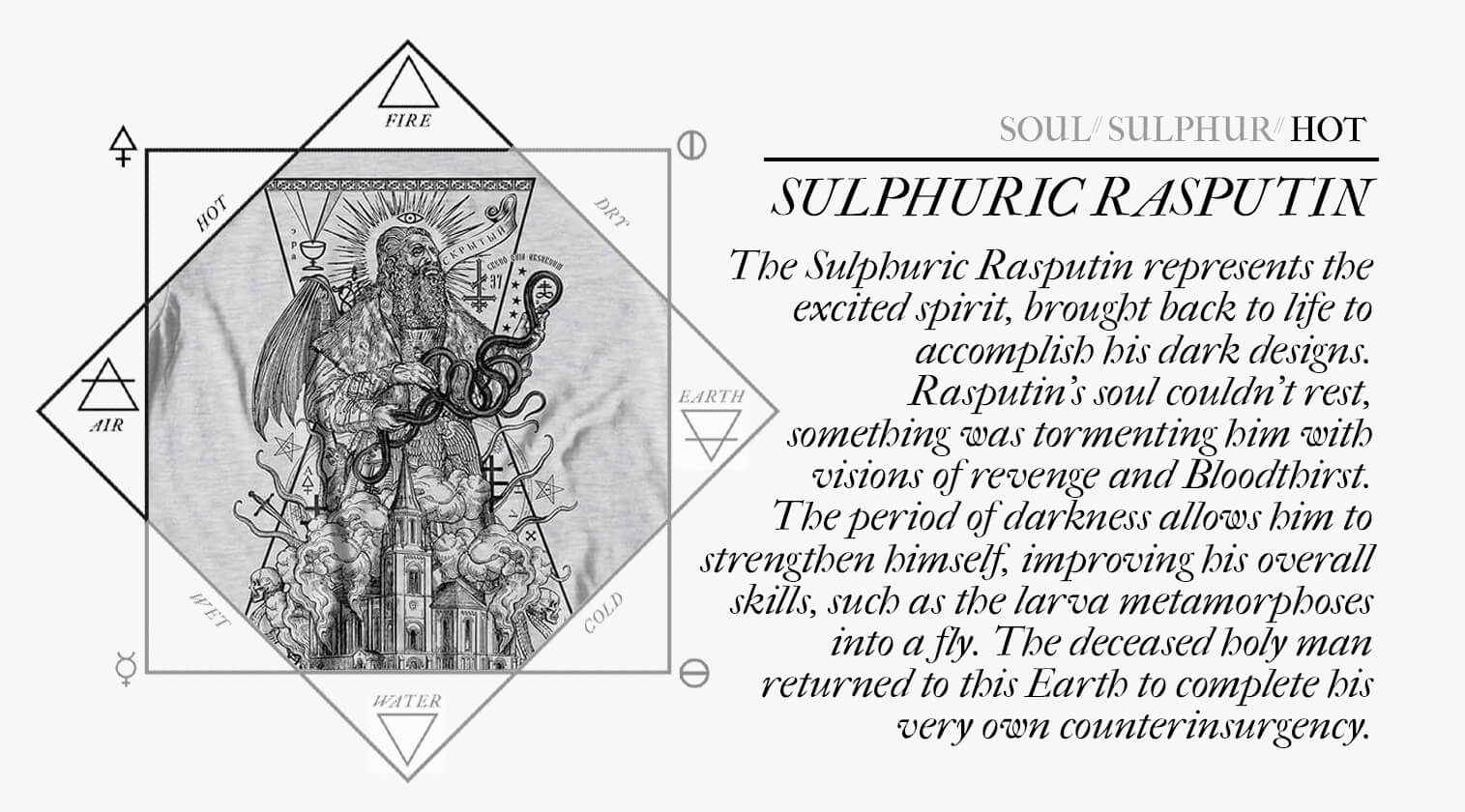
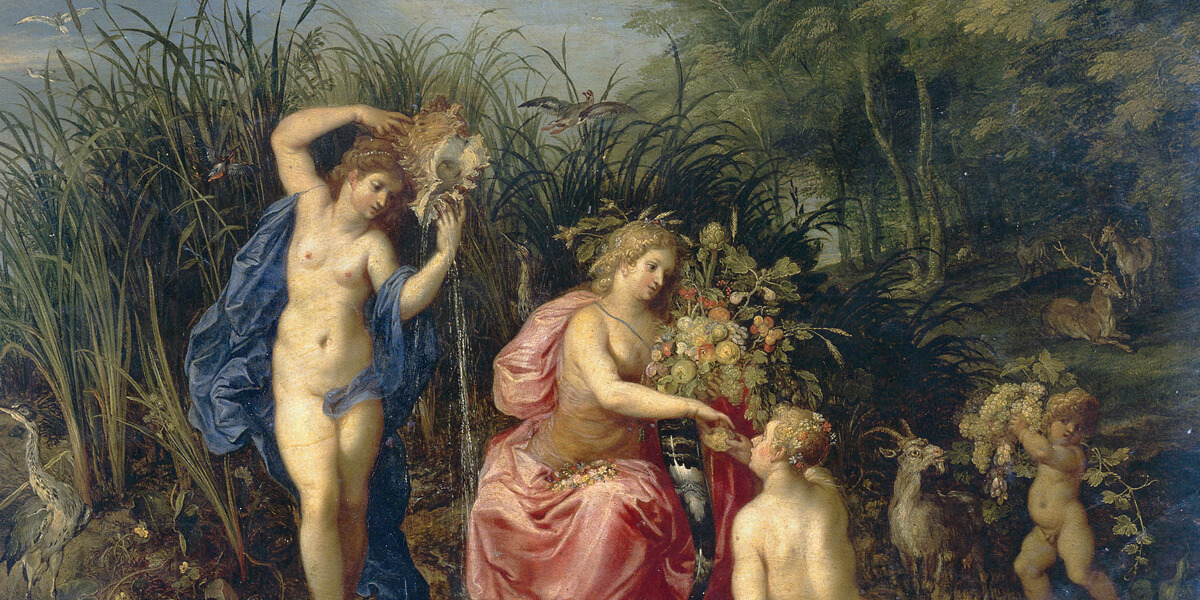
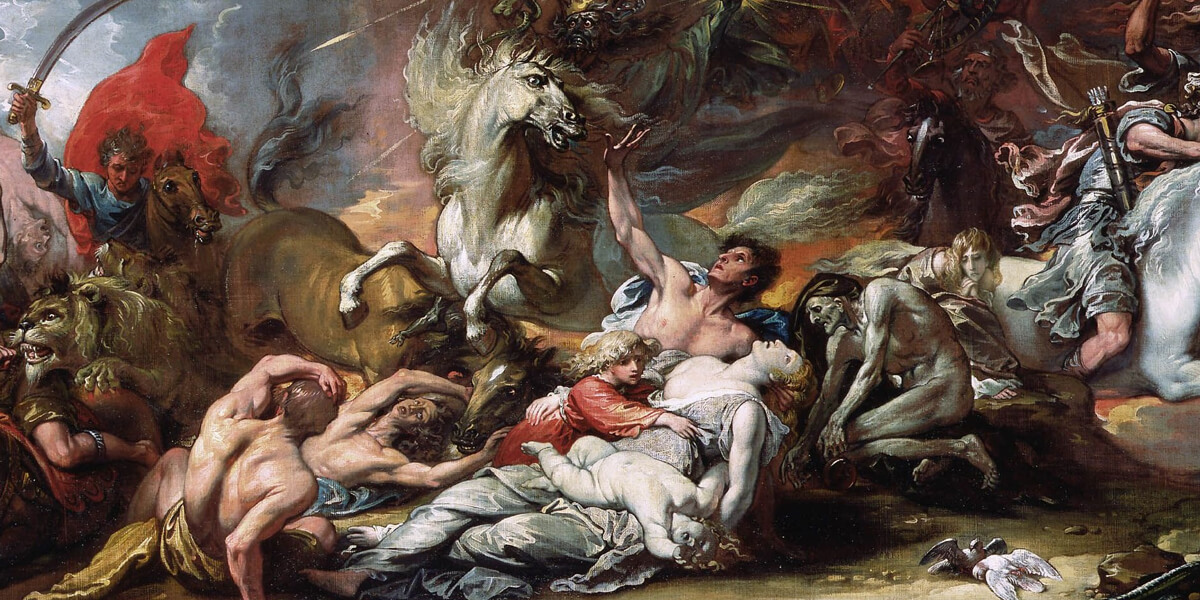
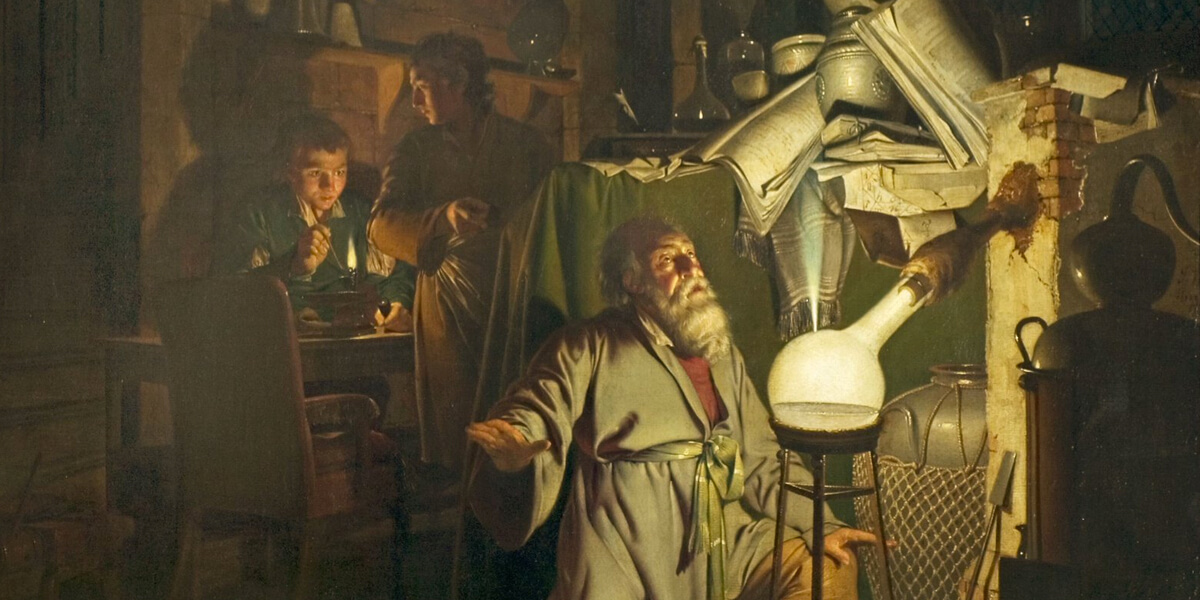

 No products in the cart.
No products in the cart. 